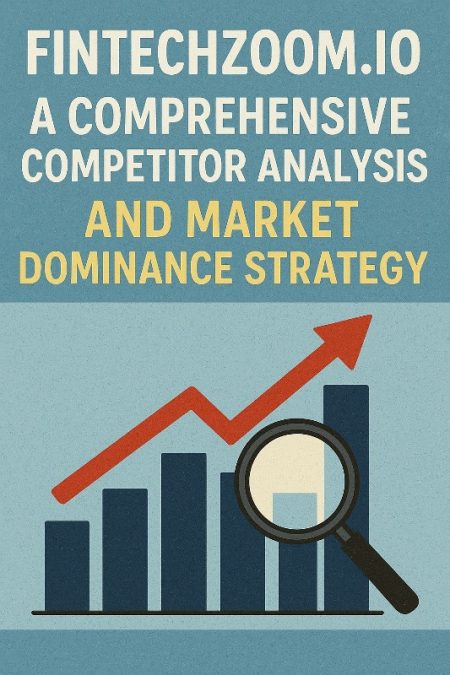Minimalism is often associated with decluttering, simplifying possessions, and living a more intentional life. However, its principles extend beyond physical belongings. When applied to investing, minimalism can lead to better financial outcomes, reduced stress, and a more sustainable long-term strategy. Many investors make the mistake of thinking that success comes from complexity—more assets, frequent trades, and chasing short-term gains. In reality, adopting a minimalist investment approach can be a powerful way to achieve financial growth with less effort, risk, and decision fatigue.
Simplifying Your Portfolio for Better Focus
One of the key principles of minimalist investing is simplicity. Many investors believe that having a diverse portfolio means holding a large number of stocks, mutual funds, or other assets. While diversification is important, owning too many investments can dilute returns and make managing a portfolio unnecessarily complex.
Instead of spreading investments thin across countless holdings, minimalist investors focus on a core set of assets that provide broad market exposure. A well-balanced portfolio can often be built with just a few index funds or exchange-traded funds (ETFs) that capture entire markets, reducing the need for constant adjustments.
Creating a Financially Sustainable Lifestyle
A significant aspect of minimalist investing is aligning financial decisions with long-term sustainability. Many people fall into the trap of overextending their budgets by trying to chase short-term gains or engaging in high-risk investments. However, by focusing on sustainability, investors can build wealth more reliably.
Minimalist investors prioritize financial habits that contribute to stability. This includes maintaining an emergency fund, investing in low-cost index funds, and avoiding unnecessary fees. They also understand the importance of consistency—small, steady contributions to an investment portfolio over time will outperform sporadic, high-risk moves.
By being mindful of unnecessary expenses and focusing on what truly matters, minimalist investors naturally discover more efficient ways to save money while growing their financial future.
The Psychological Benefits of a Minimalist Investment Strategy
Investing can be an emotional experience. Market fluctuations, media hype, and the fear of missing out (FOMO) often drive investors to make impulsive decisions. A minimalist approach helps counteract these psychological traps by fostering discipline and patience.
When an investment strategy is simple and aligned with long-term goals, there is less temptation to react emotionally to short-term market movements. Minimalist investors understand that wealth accumulation happens over time, not through constant trading. This perspective helps maintain a stable mindset, reducing stress and anxiety related to financial decisions.
Furthermore, having a streamlined portfolio means spending less time tracking individual stocks or monitoring daily price fluctuations. This frees up mental energy for more productive activities while ensuring that investments are still working toward financial goals.
Reducing Costs and Fees for Higher Returns
One of the most overlooked aspects of investing is the impact of fees. Many investors unknowingly pay excessive costs in the form of expense ratios, transaction fees, or financial advisor commissions. Over time, these fees can erode returns, making it harder to achieve long-term financial success.
Minimalist investors are conscious of these costs and take steps to minimize them. They favor low-cost index funds over actively managed mutual funds, as the latter often come with higher fees and underperform the market. They also avoid excessive trading, which not only increases costs but also exposes them to higher tax liabilities.
By reducing unnecessary expenses, investors can ensure that a larger portion of their capital remains invested and compounds over time. This small but significant shift can have a substantial impact on overall wealth accumulation.
The Power of Passive Investing
Minimalism and passive investing go hand in hand. Passive investing involves putting money into funds that track market indices rather than actively trying to pick winners. This approach is not only more cost-effective but also aligns with the principle of doing less while achieving more.
Studies consistently show that passive investors outperform most active traders over long periods. The reason is simple: markets are unpredictable, and even experienced fund managers struggle to beat the market consistently. By adopting a passive approach, minimalist investors embrace the idea that time in the market is more important than timing the market.
Avoiding Investment Fads and Speculation
Another advantage of minimalist investing is the ability to resist short-term market trends and speculative investments. Many investors get caught up in the excitement of new financial products, whether it’s cryptocurrency, meme stocks, or other high-risk assets promising massive returns.
Minimalist investors take a different approach. They understand that wealth is built through steady, consistent investing rather than chasing the latest fads. Instead of being swayed by hype, they stick to a well-defined investment plan that prioritizes stability and proven long-term growth.
The Importance of a Long-Term Perspective
A fundamental principle of minimalist investing is patience. The financial markets go through cycles of ups and downs, but history shows that they trend upward over the long run. By maintaining a long-term perspective, investors can avoid the stress of market volatility and focus on steady wealth accumulation.
Short-term market movements can be unpredictable, but staying invested for the long haul allows capital to grow through compounding. The longer money remains in the market, the more opportunity it has to generate returns.
Investing in What Truly Matters
Beyond financial markets, minimalist investing extends to life choices. Many people chase financial success without considering what they truly want. Minimalist investors take a different approach by aligning their investment decisions with their values and lifestyle goals.
For some, this means prioritizing financial independence and early retirement. For others, it could mean having the flexibility to work less and spend more time with family. The goal is not just to accumulate wealth but to use it in ways that enhance life rather than create additional stress.
Investing is not just about numbers—it’s about purpose. By simplifying investments and focusing on what truly matters, individuals can achieve financial success while maintaining a fulfilling and balanced life. All in all, minimalist investing is a powerful strategy that proves less can indeed lead to more. By simplifying a portfolio, reducing costs, avoiding speculation, and maintaining a long-term perspective, investors can achieve financial growth without unnecessary complexity.






